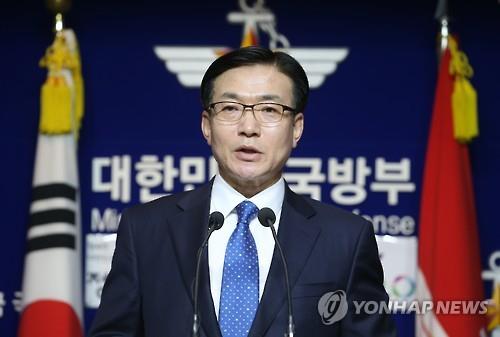- California Assembly OKs highest minimum wage in nation
- S. Korea unveils first graphic cigarette warnings
- US joins with South Korea, Japan in bid to deter North Korea
- LPGA golfer Chun In-gee finally back in action
- S. Korea won’t be top seed in final World Cup qualification round
- US men’s soccer misses 2nd straight Olympics
- US back on track in qualifying with 4-0 win over Guatemala
- High-intensity workout injuries spawn cottage industry
- CDC expands range of Zika mosquitoes into parts of Northeast
- Who knew? ‘The Walking Dead’ is helping families connect
Gov’t says it will test THAAD radar waves again to allay health concerns
SEOUL, July 26 (Yonhap) — South Korea will again check the electromagnetic waves coming from the powerful radar used in the advanced U.S. anti-missile system to help allay fears about the health risks associated with the equipment, the defense ministry said Tuesday.
The move comes after the Ministry of National Defense carried out a test on electromagnetic waves generated from the X-band radar system used on the Terminal High-Altitude Area Defense (THAAD) system stationed in Guam on July 18.
In the test carried out at the U.S. military base, the radar waves being detected posed no health risks to residents living near the military facility.
Despite such reassurances, the 45,000 residents of Seongju, 296 kilometers southeast of Seoul and the county selected for South Korea’s first THAAD battery, rejected the results, raising the possibility of poor measurement or fabrication of data.
“In the upcoming evaluation on the THADD battery’s environmental impact, we will conduct the same test again to ensure that the anti-missile system does not pose any major health risks to Seongju residents in a reasonable and subjective manner,” Defense Ministry spokesman Moon Sang-gyun said in a press briefing.
As the ministry does not have any fixed or concrete plan on the planned test, he didn’t provide further details.

In this photo taken on May 16, 2016, Defense Ministry spokesman Moon Sang-gyun delivers a press briefing on pending military issues at the ministry headquarters in Yongsan, Seoul.
To alleviate all concerns, the official said an evaluation on health risks and environmental impact will be carried out during the construction of the THAAD site next year, as well as after the system is in place.
As for the possibility of moving the THAAD battery somewhere else in Seongju, Moon said the planned site is the “optimal” place to deploy the weapons system in terms of effectiveness, costs and other strategic aspects. The site already is home to a South Korean Air Force anti-aircraft missile base.








![일본 사도광산 [서경덕 교수 제공. 재판매 및 DB 금지]](http://www.koreatimesus.com/wp-content/uploads/2024/07/PYH2024072610800050400_P4-copy-120x134.jpg)


